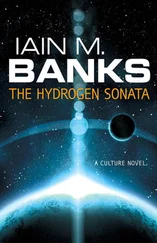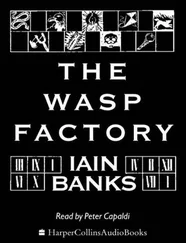— Point registers multiple contacts at ninety fleet-vee, said one voice, flagged as LR sensors.
· Point is hit, came another; Fleet Status.
· Point contact lost, came a third, followed immediately by:
· Point gone; Fleet Comms and Status almost colliding.
Instantly aware, Taince had just sufficient time for one small,
frightened part of herself to think, No! Not on my watch! And right in the Fleet Admiral’s nap time, when she was in sole charge. But even as that reaction seemed to echo and die inside her head, she was sensing, judging, thinking, getting ready to issue orders. She flitted between the real-as-it-could-be view shown by the deep-space scan sensors, where the stars were bunched hard blue-white in a circle ahead and collected into a fuzzy red pool behind with pure blackness in every other direction, and the dark abstraction that was Tacspace, a multi-lined and radiused sphere where the ships of the fleet sat, little stylised arrowhead shapes of varying sizes and colours, a line of fading dots behind each indicating their courses, green glowing identities and status codes riding alongside them.
The pre-prepared split pattern wouldn’t work; the ship which had just traded point with the Petronel was still sliding back into position in the main body of the fleet and a pattern-one split would at worst cause multiple collisions and at best be just too slow.
Oh well, time to start earning her pay and communicate. Taince sent,
— Pattern-five split, all ships. BC-three, that plus a two-point inward, left-skew delta, for five, then resume.
Copy signals flicked back, the first from her own helm officer, the last from the battlecruiser Jingal, registering its adherence to the slight kink she’d put in its course the better to accommodate their D-seven: Destroyer seven, the Culverin, the ship which had been falling back after swapping point with the Petronel. She was distantly aware of her body registering a pulse of movement, a sudden change in direction so extreme that even the shock-gel couldn’t completely mask it. Around them, the ships would be flaring off like their own silent shrapnel burst.
· Hull stress eighty-five, Ship Integrity-Damage Control told her.
· All units responding. Full pattern-five flare, said Fleet Status.
· D-seven: thanks for that, joining pattern.
· C-one: single contact, five nor-down-west.
· D-three: double contact, neg-four nor-up-east.
The cruiser Mitrailleuse and the destroyer Cartouche registering hostiles. Taince didn’t even need to glance into Tacspace to know that meant harmfuls on both sides.
· So, bracketing.
· A straddle. Got us good.
The last two voices had been the two most senior fellow tactical officers.
· We sound as though we play Battleships. (That was Fleet Admiral Kisipt. Awake now, watching. Apparently content to let Taince run the show for the moment.)
· C-one: hostile contact confirmed. PTF.
· D-three: hostile contact confirmed. PTF.
Mitrailleuse and Cartouche requesting permission to fire.
· Suggest fire\Suggest fire, the other tacticians chorused.
· Agree fire, Fleet Admiral Kisipt said. — Vice?
Vice Admiral Taince Yarabokin thought so too. — C-one, D-three; grant free fire.
· C-one: Firing.
· D-three: Firing.
Tacspace showed bright crimson beams flick from the two ships. Tiny, lime-green dots with their own status bars were missiles, darting towards the enemy ships.
· Multiple hits on the D-one debris field, LR Sensors reported.
· Still flare?
· Still flare, Taince confirmed. She was watching the scintil-lations ahead, where the wildly spinning, whirling, somer-saulting wreckage of the Petronel was being hit by further enemy munitions. The remains were dropping back rapidly towards the main fleet as it spread quickly outwards. She clicked up a countdown to their impact with the debris field: seventy-six seconds. She shifted the read-out to a skin-sensation to avoid cluttering her visual feed.
No positive results from the laser fire being laid down by the Mitrailleuse and Cartouche. Their missiles were still heading towards the hostile craft. No sign of reply so far.
What if we’re wrong? Taince thought. What if they’ve out-thought us and our so-neat manoeuvre? Deep in her life-pod cocoon, she gave a semblance of a shrug without realising it herself. Oh well, then we may all be dead. At least it should be quick.
· Still flare?
· Still flare, she confirmed again. Waiting, judging, wondering if this would work. Tacspace showed the second-hand, now increasingly out-of-date contacts the Petronel had spotted as a glowing, slowly dispersing cloud of pulsing yellow echoes. The two hard contacts still registering on the sensors of the Mitrailleuse and the Cartouche and now confirmed by other nearby ships were strobing red dots, slowly closing. The wreckage from the Petronel was a stippled mess of purple, dead ahead and drifting closer, slowly spreading.
It’s okay, Taince told herself. We can do this.
They had rehearsed all this, trained and exercised in VR time after time, specifically for this eventuality, this ambush and manoeuvre and response suite.
They knew that the Beyonders would anticipate a fleet being sent from Zenerre to Ulubis. There was, of course, only one quickest possible route; the straight-line direct one, its laser-clean rule turned into the shallowest of curves solely by allowing for the minimal drift of the respective systems as they circled with the rest of the galactic outskirts round the great wheel’s core, fifty thousand light years away.
So, did the fleet take exactly that route, laying itself open to ambush by other ships, and — more threateningly — to mines? (Mines, indeed; all you needed was a few tonnes of crushed rock. Smash a tiny asteroid into gravel the size of rice grains, spread it across the course the fleet would- take and — if they were travelling quickly enough — you could waste the lot; so close to light speed that you didn’t need to have anything home in and explode, just getting in the way was devastating enough.) Or did you loop further out, avoiding likely interception but arriving later?
And did you stick together (obvious but sensible) or split up, all the individual craft taking their own route to Ulubis, only regrouping near their destination (very risky, but potentially a tactic that the enemy wouldn’t have anticipated)? In the end the Fleet Admiral had chosen one out of a bunch of faintly bowed courses recommended by the strategists and their sub-AI machines, and they followed that route en masse.
It was a gamble. The chances were that they would be inter-cepted, especially if the Beyonders possessed the kind of materiel they were thought to have between Zenerre and Ulubis. The obvious intercept strategy was to station minor ships and other sensor platforms about halfway, then position the intercept units well behind that — already making high speed — to give them time to gather for the attack. In a direct pitched battle, there was no possibility that the vastly outnumbered and out-armed Beyonder ships would prevail. But then, they didn’t need or want a pitched battle, they just had to slow the Mercatoria fleet down as much as possible. They wanted skirmishes, ambushes, and to use the fleet’s own colossal velocity against it.
The Mercatoria fleet could, in theory, have gone slow and safe, assured just by its sheer weight of arms of being able to blast anything ahead of it out of the skies. Its orders, though, were to get to Ulubis as quickly as possible, regardless, and so it had to travel almost ultimately quickly and risk being torn to bits by a few small ships and nothing more high-tech than a few tonnes of pulverised rock.
Читать дальше












